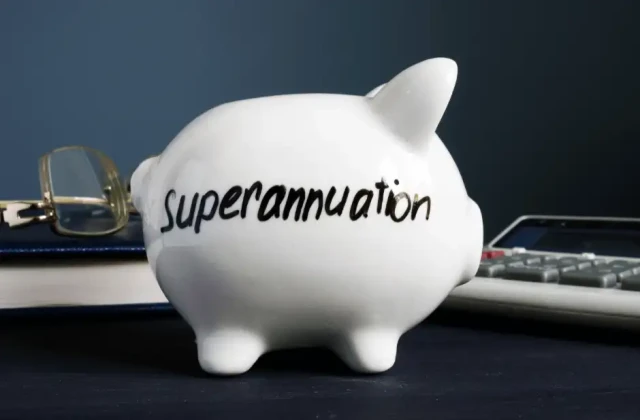Planning for the future, particularly when it comes to ensuring our retirement, can feel like a daunting task. Superannuation provides a way to ensure a comfortable life in our golden years. The Small Business Superannuation Clearing House (SBSCH) simplifies the process of making super contributions for small to medium-sized businesses. By making this process more accessible, the SBSCH helps with compliance and saves money and time. Australian SMEs can benefit from increased efficiency and a better focus on the bottom line.
Let's delve further into the importance of the Small Business Superannuation Clearing House and see how it exemplifies the government's support for SMEs and their vital role in the Australian economy.
What Is the Small Business Superannuation Clearing House
The Small Business Superannuation Clearing House (SBSCH) is a crucial resource to simplify the process for small and medium-sized businesses (SMEs) to handle and send their super contributions. Below is an in-depth explanation of the SBSCH, its objectives, and how it functions, all while upholding the values of expertise, authoritativeness, and trustworthiness.
What it is: The SBSCH, offered by the Australian Taxation Office (ATO), is an online service designed to streamline the payment of super contributions for small business owners.
Purpose: The main objective of the SBSCH is to assist SMEs in effortlessly fulfilling their superannuation responsibilities. Merging super contributions into a single platform simplifies the administrative workload and eliminates the complications of making payments to multiple super funds.

How it operates:
- Consolidation of payments: Employers can streamline their payment process by making a single electronic payment to the SBSCH, which then distributes the funds to each employee's superannuation fund.
- Compliance: It helps small and medium-sized enterprises (SMEs) meet their legal terms and conditions for retirement savings by adhering to Australian superannuation laws.
- Saves time and resources: Small and medium-sized enterprise (SME) owners can allocate additional time and resources to expanding their businesses by streamlining the process of making super contributions.
Benefits of Managing Superannuation Contributions for SMEs
In Australia, small and medium-sized enterprises (SMEs) have a legal obligation to handle superannuation contributions effectively. This aspect of financial management is crucial as it directly affects the business and its employees. SMEs can streamline this complex process and enjoy numerous advantages by utilising a superannuation clearing house. Let's delve into how this can be achieved.

Streamlined Processes and Efficiency
- Centralised Management: A superannuation clearing house merges all super contributions into a unified platform, simplifying the process for SMEs to make payments to different super funds with just one transaction. This consolidation decreases the amount of administrative work and paperwork involved.
- Time and Cost Savings: Automating the contribution process helps businesses save a significant amount of time and resources that would have been used for manual administration. This increased efficiency leads to cost savings, enabling SMEs to redirect cash flow to other essential aspects of their operations.
- Reduces Errors: Automated systems in a clearing house help minimise errors in payment amounts or details, guaranteeing precision in transactions and decreasing the necessity for time-consuming corrections.
Ensuring Compliance and Risk Mitigation
- Up-to-date with Legislation: Due to frequent changes, staying compliant with superannuation legislation can be challenging for small and medium-sized enterprises (SMEs). Clearing houses specialise in keeping up-to-date with the latest regulatory requirements, relieving businesses from the burden of constantly monitoring these changes themselves.
- Avoidance of Penalties: Failure to meet superannuation requirements can lead to significant fines for companies. Businesses can reduce this risk by using a clearing house to ensure contributions are made on time and accurately, preventing any possible financial penalties.
- Record Keeping and Reporting: Clearing houses provide robust record-keeping and reporting capabilities, which help businesses keep accurate records for compliance and auditing. This feature also streamlines the annual reporting process to the Australian Taxation Office (ATO).
Enhanced Employee Satisfaction and Retention
- Timely Contributions: Employees appreciate timely retirement savings contributions. The reliability of a superannuation clearing house plays a crucial role in ensuring prompt contributions, ultimately increasing employee satisfaction and confidence in their employer.
- Transparency and Trust: An SME can showcase its dedication to employees' financial situation by implementing a streamlined and trustworthy process for managing super contributions, fostering a culture of trust and transparency.
- Flexible Contribution Options: Clearing houses frequently offer the option to manage extra voluntary contributions, allowing employees to boost their retirement savings and take advantage of potential tax benefits. This aspect can be an appealing component of an SME's employment value proposition.
How to Enhance Retirement Savings for Your Employees

Providing competitive benefits, such as comprehensive retirement savings plans, can enhance employee retention and satisfaction. Here are a few strategies for small and medium-sized enterprises (SMEs) to enhance their employees' retirement savings.
- Regular Contributions: Begin by ensuring that your business meets the minimum superannuation contribution standards established by the Australian government. Additionally, consider establishing a system for making more regular contributions to your employees' superannuation accounts, enabling them to take advantage of compound interest in the long run.
- Incentivise Employee Contributions: Create a matching program that increases an employee's superannuation fund by a certain percentage based on their contributions. This initiative enhances retirement savings and encourages employees to improve their superannuation contributions.
- Financial Education: Establish a matching system that adds a percentage to an employee's superannuation fund following their contributions. This approach enhances retirement savings and incentivises employees to boost their superannuation contributions.
- Flexible Work Arrangements: Flexible work arrangements allow employees to cut costs on commute and work-related expenses and empower them to allocate more funds towards their superannuation.
How to Use the Small Business Superannuation Clearing House

The management of superannuation contributions can pose a daunting challenge for owners of small and medium-sized enterprises (SMEs). The Small Business Superannuation Clearing House (SBSCH) presents a streamlined solution to simplify this complex process. Here's a practical guide to superannuation clearing house setup and management:
1. Visit the ATO Website: Head to the Australian Taxation Office (ATO) website. Look for the Small Business Superannuation Clearing House section under the "Business" tab.
2. Register for an Account: You'll need your Australian Business Number (ABN) and other business details handy. Click "Register" and follow the prompts.
3. Set Up Your Business Details: Once your account is active, enter your business details, including your ABN and contact information. This step is crucial for ensuring accurate correspondence and compliance.
4. Add Employee Details: Enter each employee's details, such as their name, Tax File Number (TFN), and super fund information. Gather this information beforehand for efficiency.
5. Make a Contribution: Select the "Make a Contribution" option to make a superannuation contribution. Here, you'll enter the payment details for each employee, including the contribution amount and period.
6. Submit and Pay: Review your contribution details for accuracy, then submit. You'll be directed to a payment gateway in real-time. Payments can typically be made via EFT or BPAY.
Tips for Smooth Integration:
- Double-check Employee Details: Errors in employee information can cause delays. It’s a good idea to always verify details before submission.
- Regularly Update Records: Keep your business and employee information current to avoid processing issues.
- Troubleshooting Common Issues: If you encounter errors or delays, refer to the SBSCH's help section. For guidance on complex issues, feel free to contact the ATO directly.

As we conclude our discussion on the future of SME super, we have explored the changing landscape of superannuation, emphasising the significance of keeping up with super savings trends. For small to medium enterprises, adjusting to these changes goes beyond mere compliance for the short term; it represents a strategic shift towards improved financial well-being and employee contentment for the long term.
Incorporating tools like the Small Business Superannuation Clearing House can significantly simplify this process, providing a unified platform to pay super contributions. As we anticipate a future full of opportunities, it is essential to take decisive actions today. Start exploring the advantages of the Clearing House and set your business on the path to success in saving for superannuation.



